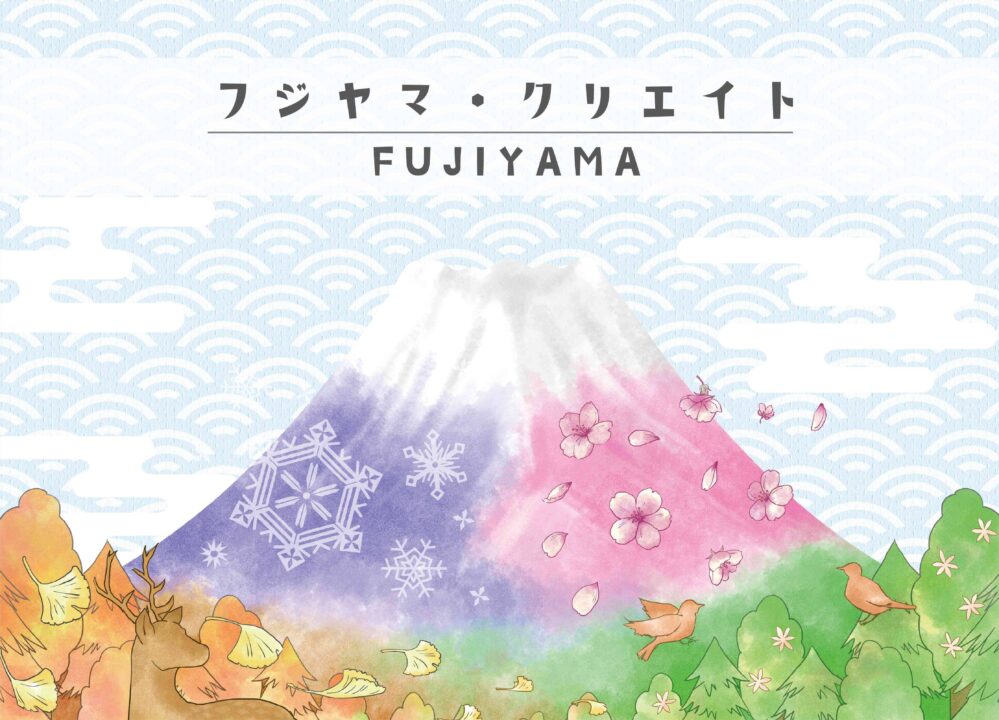Welcome, cardboard adventurers! If you’ve ever thought, “Hey, I’d like to climb a mountain without leaving my kitchen,” then you’re going to want to stick around for this review. I recently wrangled my friends around the table to tackle Fujiyama, a game that promises tense moments, sneaky player moves, and a mountain’s worth of strategy (and maybe a pebble or two of luck). Now, before you blow your board game budget, let’s see if Fujiyama is worth the hike—or if you should leave this one stranded at base camp.
How It Plays
Setting up
First, everyone grabs their color tokens and a player board. Put the Fujiyama mountain tiles in the center. Deal out the starting cards. If your cat insists on sitting in the box, that’s a house rule, not official.
Gameplay
On your turn, pick a tile and place it to build up the mountain. You use your cards to climb, block, or even mess with your friends’ plans (devilish laughter optional but recommended). Watch out—some cards let you take shortcuts, but others will have you tumbling down the slopes if you push your luck.
Winning the game
When the mountain’s peak is built, everyone checks their progress. Count your collected points from climbing and bonus tiles. Whoever has the most points becomes the master of Fujiyama (and earns bragging rights until next game night).
Want to know more? Read our extensive strategy guide for Fujiyama.
How to Play Fujiyama: Rules and Victory Awaits!
Alright, let’s clear the fog on Fujiyama’s rules! Picture this: you and your friends are bold mountaineers, hiking up the tough slopes of Mount Fuji, armed with nothing but chunky wooden meeples and a thirst for cardboard glory. The rules are simple on paper, but they’ll make your brain sweat faster than a sprint up the real mountain.
On your turn, you play a card from your hand. This card tells you which path your climber can use or where you can place an obstacle. You’ll try to outsmart your friends by blocking the easy routes with snow, rocks, or—my personal favorite—sheep. (Don’t ask. Just accept the sheep.) You can also collect gear along the way, which lets you break some rules and surprise everyone.
To win Fujiyama, you must be the first player to get all your climbers to the top. But oh boy, it’s not that simple. There are only so many spots at the summit, and your rivals will block you at every turn. Planning two steps ahead is a must. And don’t forget: if you run out of cards at the wrong moment, you’ll have to stand there, awkwardly pretending you’re enjoying the view while everyone else zips past you.
In short, winning is about playing cards smart, blocking others when you can, and grabbing those power-ups before someone else does. If you love games with tight rules and tense decisions, Fujiyama won’t let you down.
Next up, find out how your so-called friends can become your fiercest rivals in Fujiyama—get ready to plot, scheme, and maybe throw a sheep or two!
How Players Clash and Scheme in Fujiyama
So, you want to know how folks actually interact (read: mess with each other) in Fujiyama? Buckle up, because this mountain isn’t climbed alone. During my many rounds, I’ve seen friendships tested, alliances formed and then demolished faster than my dog can steal a sandwich. Fujiyama is not one of those games where you just stare at your own little board in silence. Nope. Every action you take is on display and can set off a dramatic chain of groans and wild accusations.
First off, blocking other climbers is basically an art form. If you place your tile cleverly, you can force your friends to take the long way ‘round, which is extra funny if they’ve been boasting about their pathfinding skills. Negotiation plays a big part too, especially if you play with people who like to plead or bargain their way out of a jam. I’ve seen people promise cookies and eternal friendship, all to get an opponent to move somewhere else! Spoiler alert: the cookies never appear and alliances dissolve in minutes.
Strategically, you want to watch what cards or tiles your rivals have, predict their next moves, and mess with their plans just enough that you don’t become the obvious target. Sometimes helping someone actually helps you too—at least, until the next turn. You’ve got to be on your toes and a little sneaky.
Let’s just say, playing Fujiyama with the right group can feel a bit like a mountain climbing soap opera. But all this drama leads to one burning question, and that’s whether skill or Lady Luck decides who gets bragging rights. Get your hiking boots ready—we’ll figure that out in the next part!
Luck vs Skill: Who’s Really Climbing Fujiyama?
Let’s talk turkey—er, I mean, let’s talk luck and skill when it comes to Fujiyama. Every gamer has a story about losing horribly to a lucky roll (I may still hold a personal grudge from 2018). In Fujiyama, I’m happy to say things aren’t quite that cruel, but luck isn’t exactly left at the base camp either.
Most of the game’s flavor comes from planning your route up Mount Fuji. There’s skill in watching your opponents, calculating moves, and pouncing on chances like a board game ninja. If you’ve got sharp eyes and a brain running on more than three cups of coffee, you can do well. However, the game’s card draws—oh, those unpredictable little rectangles—can somtimes throw your plans off the mountain side. I once put together the perfect turn, only to draw a card that made me rethink my entire existence. It’s not a total luck fest, but it’s also not chess. That balance makes Fujiyama feel accessible to new players (my grandma loved it), but if you’re a hardcore strategist, you might find yourself muttering about “randomness” under your breath more than once.
For families, the luck keeps everyone in the running, so no one gets left gasping for air half-way up the slope. But for groups who want pure skill, it’s a bit like hiking with a strong breeze—expect the unexpected.
Now, before you shuffle your cards in a rage, let’s talk about something everyone can agree on: how good Fujiyama looks and feels on your table. Stay tuned for all the gorgeous—and less gorgeous—details!
Fujiyama’s Components and Artwork: Is This Mountain Pretty Enough?
Let’s be real, folks—no board game wants to show up to the table looking like it dressed in the dark. Thankfully, Fujiyama comes pretty stylish. As soon as I cracked open the box, the smell of fresh cardboard hit me, and I felt like a kid in a stationery shop. The mountain tiles are thick enough to survive my clumsy shuffling (important, trust me), and the meeples actually stand up without toppling over every time someone sneezes.
The artwork? It’s got that peaceful, watercolor vibe. The trees look like a studio Ghibli artist had a good day, and the mountain itself is the star of the show. I caught myself arranging the tiles to make my own miniature Mt. Fuji scene. My friend Dave tried to use the meeple as Godzilla, but that’s not in the rules (yet).
Even the box insert is above average, which means clean-up doesn’t feel like the end of a Jenga game gone wrong. Components didn’t feel flimsy—except for that one card with a printing smudge. But hey, if you squint, it looks like a cloud. Not a deal breaker, unless you’re an art critic with a magnifying glass.
Overall, Fujiyama looks pretty great on my game shelf and doesn’t feel like it’ll fall apart after the third game night. If you get a kick out of nicely produced games, this one is more zen garden than landfill.
Final verdict: I recommend Fujiyama for folks who like a good-looking table and want bits that last more than one round. Just watch out for Godzilla meeple attacks.
Conclusion
So, that’s my wild ride up the slopes of Fujiyama. The art is lovely, the components feel solid, and there are just enough sneaky moves to keep things spicy. Sure, luck can poke you in the eye if you aren’t paying attention, but skill and a dash of backstabbing will often get you to the top. If you like games with player interaction and don’t mind the odd lucky break, this one’s a winner—unless you hate losing to your smug uncle for the third time in a row. That wraps up my review! May your next game night be gloriously dramatic (and preferably, not end with flipping the table!).


